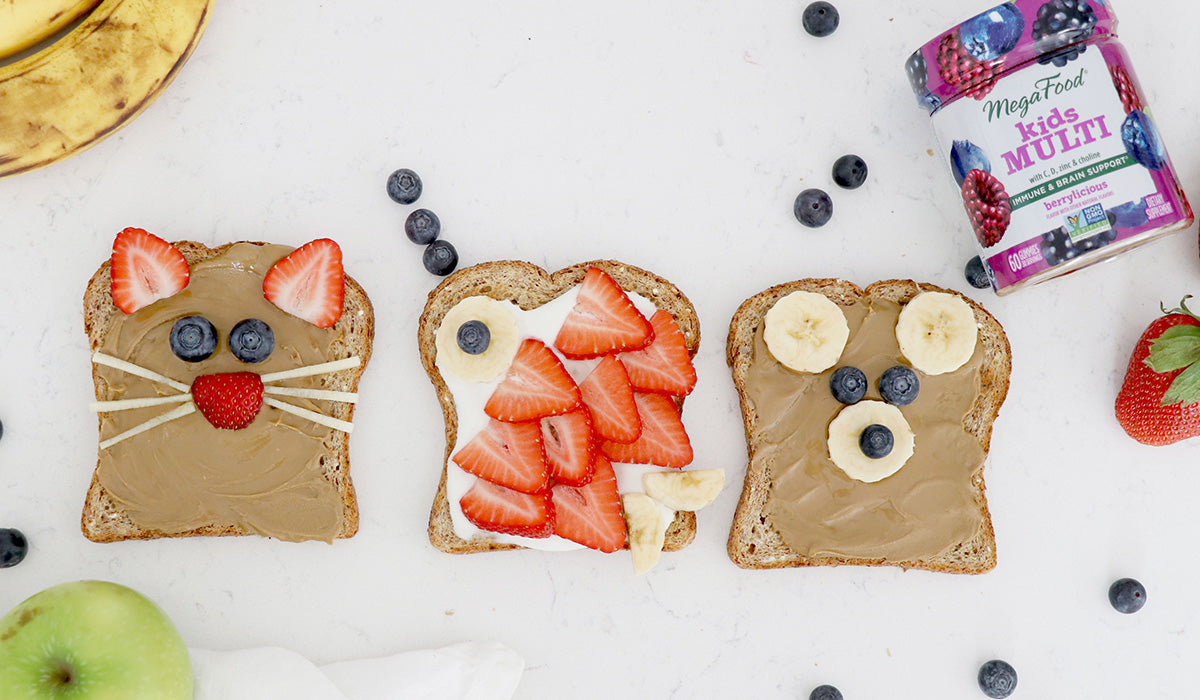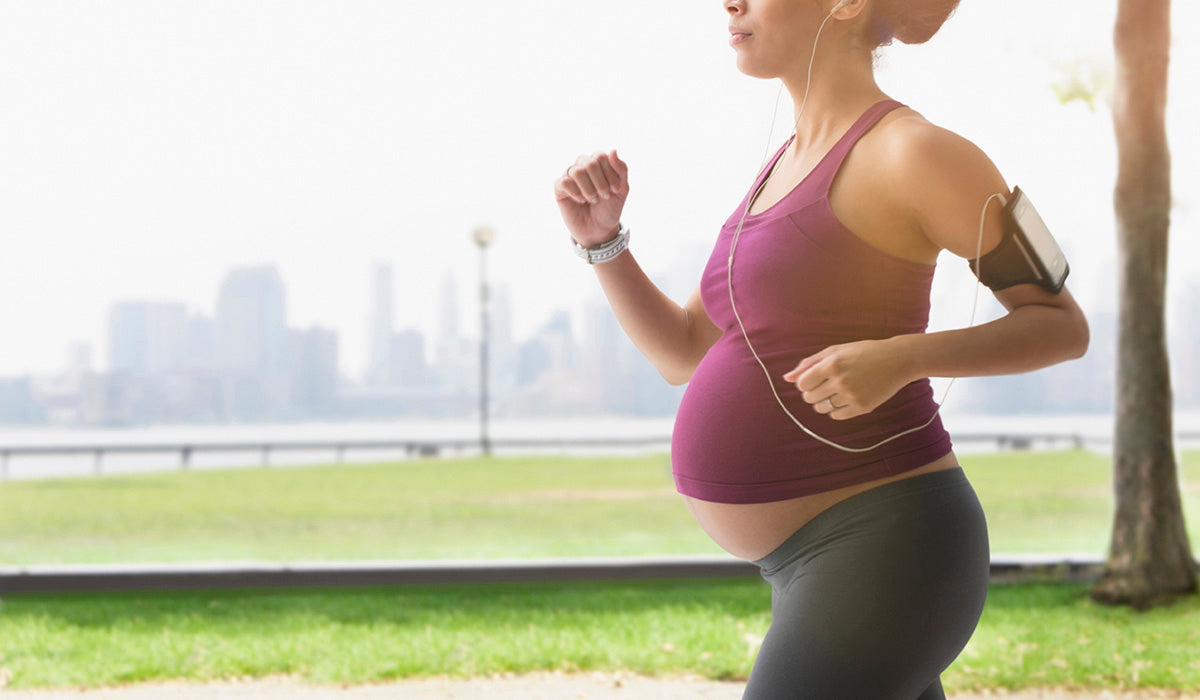How to make Animal Toast- Easy, Kid-Friendly Snack

Megan Roosevelt, Registered Dietitian Nutritionist
Megan Roosevelt is a paid partner. All opinions and text are her own.
Does your child ask for a snack and then 30 minutes later, ask for another snack? Do you feel like you’re making snacks and meals all day long?! I hear you!! I’ve been there and I have some snacking tips that I hope will help fill and fuel your little one’s for their big adventures ahead! First, let’s chat about how to make a balanced snack….
How To Make A Balanced Snack
I try to complete this balanced snack or meal check-list to help avoid the, “Can I have a snack?” question right after we’ve just eaten.
A balanced snack should include:
- A protein or fat
- A carbohydrate (aim for whole food sources that are packed with fiber)
- Colors from fresh fruits and veggies!
Balanced snacks may help balance blood sugar and energy levels and help them feel full long. Let’s dive into the benefits of these key pillars of a balanced snack and why they are so important!
Fiber:
Fiber keeps us full because it provides a lot of volume and takes longer to digest. Fiber is also important for helping move food through the digestive tract. Fiber rich foods also help feed your gut microbes, for both gut and immune support!
Here are the amounts of fiber needed per day:
- Toddlers ages 1-3: 19 grams per day
- Kids ages 4-8: 25 grams per day
- Females ages 9-13: 26 grams per day
- Males ages 9-13: 31 grams per day
Protein:
Protein helps your body build cells, muscles and form tissues. This macronutrient is especially important during times of growth like infancy and childhood.Protein can help us feel full longer because it can help reduce the level of our hunger hormone, ghrelin.
Here are the amounts of protein needed per day:
- Toddlers ages 1-3: 13 grams per day
- Kids ages 4-9: 19 grams per day
- Kids ages 9-13: 34 grams per day
Healthy Fats:
When children are young and developing, the body uses fat to build hormones and nerve tissue, including the tissues in the brain which leads to brain growth along with neural and cognitive development. Healthy fats also work to keep us full because they are the last to leave our digestive tract.
Here are the amounts of fat needed per day:
- Toddlers ages 1: 30-40% of daily calories from fat
- Toddlers ages 2-3: 30-35% of daily calories from fat
- Kids ages 4-13: 25-35% of daily calories from fat
Fruits & Veggies:
Fruits and veggies contain a wide variety of vitamins and minerals that are important for growth and development, immune function, maintaining healthy digestion, recovery, and supporting inflammation. According to the USDA, below is the recommended intake of fruit and vegetables per day for toddlers and kids.
These amounts are based on calorie needs:
- Toddlers ages 1-2: ⅔ - 1 cup vegetables per day; ½ - 1 cup fruit per day
- Kids ages 2-8: 1 - 2 ½ cups vegetables per day; 1 - 2 cups fruit per day
- Kids ages 9-13: 1 ½ - 3 ½ cups vegetables per day; 1 ½ - 2 cups fruit per day
Does My Child Need A Multivitamin?
I personally have been taking MegaFood supplements for years and I’m so excited about their Kids Multi Gummies! For ages 4 and older, these gummies contain 19 essential vitamins and minerals including choline to support healthy brain function in children.* As an RDN I recommend aiming to meet your nutrition needs first through real foods. However, no one eats perfectly all of the time and therefore a quality multivitamin can be a great way to fill in any nutritional gaps.
Animal Toast - Easy, Kid Friendly Snack
So let’s get back to snacking! These cute and easy to make animal toasts are a great example of a balanced meal or snack containing protein, fiber, fat and colorful fruit!
Fruity Fish Toast

Makes 1
Ingredients:
- 1 slice whole-wheat bread (or bread of choice)
- 2 tablespoons unsweetened greek yogurt (I love using almond milk greek yogurt)
- 2 strawberries
- 4 blueberries
- ¼ banana
Directions:
- Toast one slice of bread.
- Spread yogurt onto the toast.
- Cut one banana slice in half and place in the corner of the toast with the round edges facing each other, to create a fish tail.
- Thin slice the strawberries and layer like scales on the yogurt to create the shape of a fish.
- Add one slice of banana, topped with a blueberry for the eye, and three blueberries coming from the face of the fish, for air bubbles.
Nutty Bear Toast

Makes 1
Ingredients:
- 1 slice whole-wheat bread (or bread of choice)
- 2 tablespoons nut or seed butter of choice
- ¼ banana
- 3 blueberries
Directions:
- Toast one slice of bread.
- Spread nut or seed butter onto the toast.
- Cut three slices of banana, add two along the top of the toast as the ears and one in the center as the snout.
- Add two small blueberries above the snout as the eyes, and one large blueberries on the banana snout for the nose.
- Enjoy!
Kitty Cat Toast

Makes 1
Ingredients:
- 1 slice whole-wheat bread (or bread of choice)
- 2 tablespoons nut or seed butter of choice
- 1 strawberry
- ¼ apple
- 2 blueberries
Directions:
- Toast one slice of bread.
- Spread nut or seed butter onto the toast.
- Thin slice the strawberry and place the two largest center slices along the top of the toast, as the ears of the cat.
- Next add one small end slice of the strawberry as the nose (seeds facing up)
- Add very thin sticks of apple as whiskers and two large blueberries as the eyes!
- Enjoy!
Health Benefits of Key Ingredients!
Here are some health benefits from key ingredients featured in our animal toasts!
Strawberries
Did you know that strawberries contain vitamin C? In fact, about 4-ounces or 5 large strawberries provides you with almost your entire daily value of vitamin C! Vitamin C is important for maintaining healthy immunity along with helping the body produce collagen for healthy skin.
Bananas
Bananas contain a wide variety of different vitamins and minerals and 1 medium banana contains 11% of your daily value of copper and 10% of your daily value of potassium. Copper helps your body make energy, build tissues and is a part of brain development. Potassium helps your muscles contract including your heart muscle! It also is what helps keep a normal level of fluid inside your cells.
Blueberries
Blueberries are high in antioxidants, which is important for helping your body fight free radicals. One of the main compounds found in blueberries is anthocyanins. Anthocyanins not only work to protect your cells, but also are what give blueberries their amazing color!
Sunflower Butter
For those that do not eat peanut butter or perhaps your child’s school doesn’t allow peanut butter, Sunflower Butter is a great alternative! Made from sunflower seeds, it is nutritionally a great choice: one serving (2 tablespoons) of sunflower seed butter contains 7 grams of protein and 40 percent of an adult’s daily value (DV) for vitamin E.
Greek Yogurt
While not all yogurt is created equal, a quality yogurt can be a source of probiotics and protein! I love almond milk greek yogurt for its thick, creamy consistency along with being higher in protein than traditional non-dairy yogurts. Look for unsweetened yogurts to avoid added sugar and instead top with your own fresh fruit!
Have a happy and healthy day!
You can stay connected with Megan Roosevelt, RDN on Instagram at @HealthyGroceryGirl, watch recipe videos at YouTube.com/HealthyGroceryGirl or visit her recipe and wellness blog at HealthyGroceryGirl.com
*These statements have not been evaluated by the Food and Drug Administration. This product is not intended to diagnose, treat, cure or prevent any disease.
https://www.webmd.com/children/features/digestive-health
https://www.nap.edu/read/10490/chapter/1#iv
https://pubmed.ncbi.nlm.nih.gov/16373990/
https://pubmed.ncbi.nlm.nih.gov/21403995/
https://pubmed.ncbi.nlm.nih.gov/22175691/
Sources:
https://fdc.nal.usda.gov/fdc-app.html#/food-details/324860/nutrients



Leave a comment
This site is protected by hCaptcha and the hCaptcha Privacy Policy and Terms of Service apply.